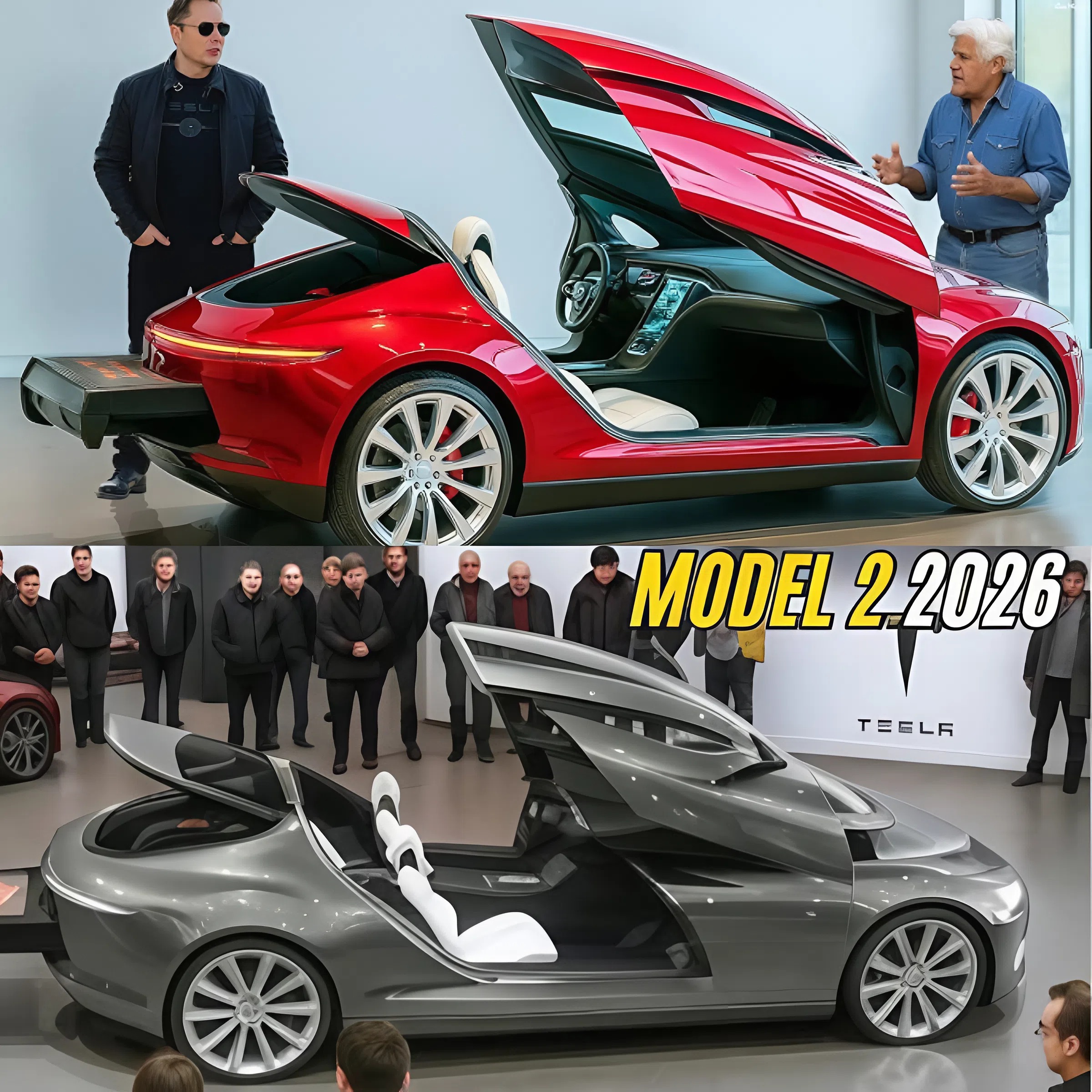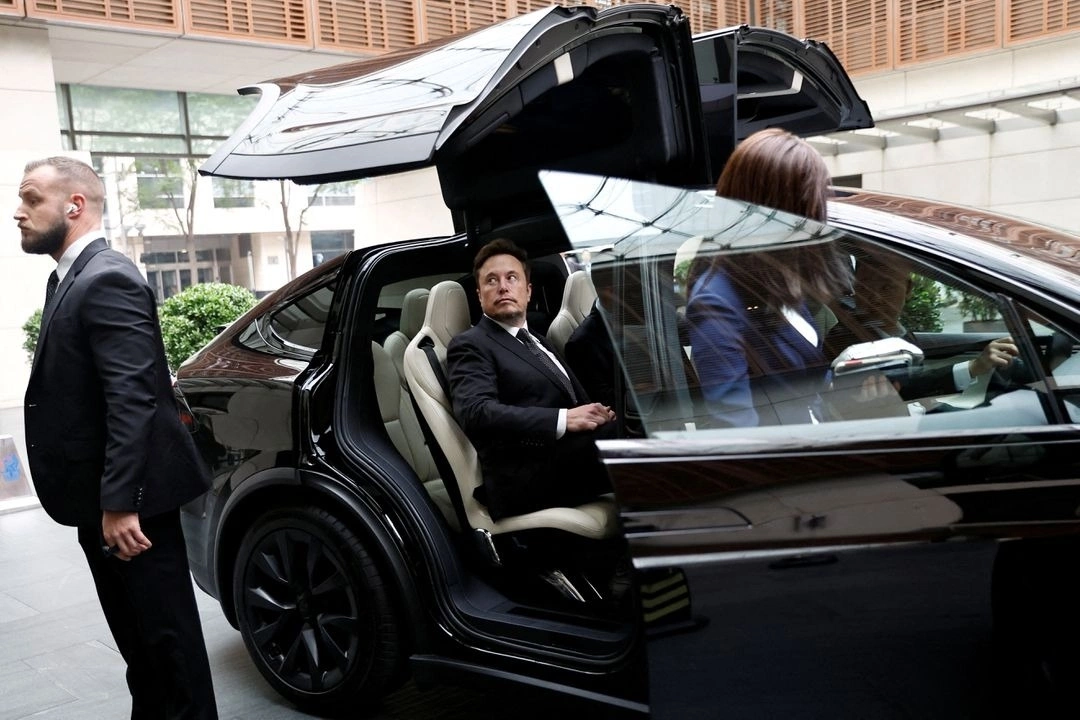In a groundbreaking reveal that has electrified the automotive world, Elon Musk unveiled the 2026 Tesla Model 2, a compact electric vehicle (EV) poised to redefine the future of driving. With a starting price of just $15,990, this model aims to make EVs more accessible than ever before, challenging traditional automakers and setting a new standard in the industry.
A Bold Move in Pricing
The Model 2’s price point is a significant departure from Tesla’s previous offerings, positioning it as a direct competitor to budget-friendly EVs from brands like BYD. This strategic pricing could accelerate the adoption of electric vehicles, particularly among first-time EV buyers and those seeking an affordable entry into the electric mobility space.
Innovative Features Packed into a Compact Design
Despite its modest price, the Model 2 doesn’t skimp on innovation. Early footage showcases a sleek, minimalist exterior design that conceals a wealth of advanced technology inside. The interior boasts Tesla’s next-generation AI-powered cockpit, featuring self-learning climate zones that adapt to the driver’s preferences. Additionally, the vehicle offers an impressive range of 400 miles on a single charge, addressing one of the most common concerns among potential EV buyers.

The “iPhone Moment” for Electric Cars
Industry experts are hailing the Model 2 as the “iPhone moment” for electric vehicles, drawing parallels to the transformative impact Apple’s smartphone had on the tech industry. The combination of affordability, advanced technology, and impressive range positions the Model 2 as a game-changer in the EV market.
A Wake-Up Call for Traditional Automakers
The introduction of the Model 2 has sent ripples through the automotive industry. Traditional automakers are now faced with the challenge of competing with Tesla’s innovative approach and aggressive pricing strategy. The Model 2’s success could force established brands to rethink their strategies and accelerate their own electric vehicle development efforts.

Looking Ahead
As Tesla prepares for the Model 2’s official release, the automotive world watches closely. If the vehicle lives up to its promises, it could mark a pivotal moment in the transition to sustainable transportation. With its combination of affordability, advanced technology, and impressive range, the 2026 Tesla Model 2 is poised to make a significant impact on the future of driving.
Police Officer Arrested Elon Musk for Speeding — Then Looked Inside the Car and Froze – lbs
Uncategorized thusuong·October 22, 2025·0 Comment
When a police officer stopped a sleek, silver Tesla speeding along a California highway, he expected a routine traffic violation. What he didn’t expect was to find Elon Musk — the world’s most famous tech billionaire — behind the wheel.
But the real shock came after the stop. When the officer looked inside the car, what he saw left him completely frozen — and, within hours, the story had gone viral around the globe.

A Routine Stop Turns Extraordinary
It happened late on a quiet Thursday evening just outside Palo Alto, not far from Tesla’s headquarters. According to early reports, the officer noticed a Tesla Model S Plaid traveling well above the speed limit on a nearly empty stretch of road.
When he turned on his siren and pulled the car over, he approached the driver’s side window expecting the usual excuses — a late meeting, a family emergency, perhaps a distracted driver testing the car’s “autopilot” feature.
Instead, the window rolled down to reveal none other than Elon Musk himself, smiling calmly as if nothing unusual had happened.
“Good evening, officer,” Musk reportedly said. “Testing some… performance metrics.”

The Officer’s Suspicion
According to a police statement later released, the officer initially assumed this was a prank or a deepfake stunt. After all, it’s not every day that the billionaire CEO of Tesla, SpaceX, and X (formerly Twitter) is caught speeding in one of his own cars.
Still following protocol, the officer requested identification. Musk cooperatively handed over his license and registration — both perfectly valid. Everything appeared normal.
But then the officer noticed something strange glowing from the passenger seat.
What Was Inside the Car
Inside the futuristic Tesla, the dashboard displayed what witnesses described as a completely unfamiliar software interface — not the standard Tesla OS used in commercial vehicles. It showed advanced diagnostics, experimental energy metrics, and a mysterious label that read: “Neural Sync Active — Prototype 3.”
Realizing that he might be looking at confidential Tesla technology, the officer hesitated. “I wasn’t sure if I was supposed to see that,” he reportedly told supervisors later.
Musk, noticing the officer’s puzzled expression, chuckled and said,
“That’s a bit of the future you’re seeing there. Still under wraps.”
The officer froze. He had just witnessed what could be an unreleased Tesla neural interface — a system rumored to connect directly with the driver’s brain, allowing mental control over certain vehicle functions.
If true, this would mean Musk was testing not just a car, but the next generation of human–machine interaction — a merging of Tesla’s autonomous tech with Neuralink’s brain-computer interface.

No Ordinary Traffic Stop
Within minutes, additional patrol units arrived, partly due to the car’s registration and the identity of the driver. After verifying that no crime beyond speeding had occurred, officers decided not to detain Musk but issued a standard speeding citation — one he reportedly accepted with a grin.
Before leaving, Musk allegedly told the officer:
“You’ll probably see this tech in showrooms sooner than you think.”
By dawn, footage from a bystander’s dashcam had hit social media. The sight of Musk being pulled over by police — and the speculation about the strange dashboard screen — exploded across platforms like X and Reddit. The hashtag #MuskTrafficStop trended worldwide within hours.
Tesla’s Response
Tesla declined to comment directly on the incident, issuing only a brief statement:
“Tesla regularly conducts controlled testing of prototype systems. Safety and compliance remain our top priorities.”
However, insiders close to the company hinted that the car Musk was driving may have been a NeuralDrive prototype — a next-generation control interface combining AI-assisted reflexes with brain signal feedback.
If that’s true, the officer who made the stop may have inadvertently witnessed one of the most secretive innovations in Tesla’s history.
Public Reaction
The internet’s reaction ranged from disbelief to awe. Some accused Musk of staging the event for publicity, while others saw it as proof that Tesla is experimenting far beyond public knowledge.
“Only Elon Musk could turn a speeding ticket into a technological revelation,” joked one user on X.
Others expressed concern about the potential privacy and ethical implications of such a system — especially if it truly connects the driver’s mind to the vehicle.
Still, many fans praised Musk’s relentless push for innovation. “He’s not just breaking speed limits,” one comment read, “he’s breaking the limits of reality.”
A Glimpse Into the Future
For the police officer, it was a night he’ll never forget. What began as an ordinary traffic stop may have given him a front-row seat to technology decades ahead of its time.
While authorities confirmed that Musk faced only a minor citation, questions remain: What exactly was “Neural Sync Prototype 3”? How advanced is Tesla’s integration with Neuralink? And how close are we to driving with our minds instead of our hands?
As for Elon Musk, he hasn’t commented directly on the incident. But later that night, he posted a cryptic message on X:
“The human mind is the ultimate driver.”
The world, once again, was left both amazed and unsettled — and reminded that when Elon Musk takes the wheel, nothing is ever just another ride.